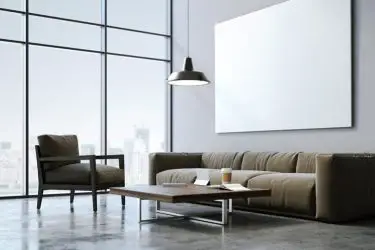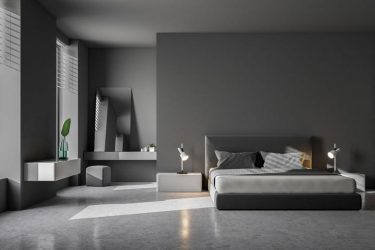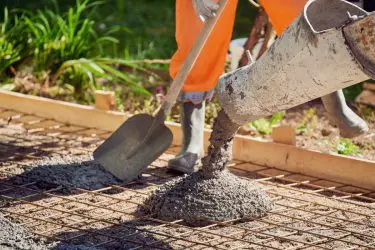One of the hottest places on Earth is Death Valley, California. In July of 1913, the air temperature reached a record high of 134°F. Concrete, unfortunately, cannot survive in such extreme temperatures, and even if you don’t live in Death Valley, summers can still get dangerously hot in places like Arizona and can ruin a perfectly good concrete patio.
Here are 7 easy ways to keep your concrete patio 20 degrees cooler or more:
- Choose textured concrete.
- Add light-colored pigments in the concrete mix before pouring.
- Add a protective coating to the concrete surface .
- Add shade to prevent heat from the sun’s rays.
- Use a fan or fog system.
- Add a decorative covering to the concrete patio.
- Spray the concrete with water.
You might know that concrete that has absorbed too much heat can affect your comfort in a patio area. You probably don’t know that dangerously hot concrete can also affect the integrity of the concrete, the environment, and even your health.

Table of Contents
A Textured Concrete Surface Keeps the Patio Cooler
The first thing to know about concrete is that professionals typically use an index system to determine how reflective concrete’s surface is.
This system is called the solar reflectance index or “SRI.”
They assign concrete surfaces a value from 0 to 100. The higher the number, the more reflective the surface. The lower the number indicates a higher absorbency of sunlight and heat.
Although it might seem counterintuitive, a concrete patio with a more textured surface will have a higher SRI number and cause heat to rebound off its uneven surface, keeping it cooler.
It also has small pockets of air that prevent someone walking barefoot across it to touch 100% of the surface. Textured concrete also has better airflow through its structure than smooth concrete.

There is a type of concrete called “pervious” concrete which is an eco-friendly concrete mix that allows for faster cooling times, especially at night.
One of its downsides is that it doesn’t reflect sunlight and heat very well during the day, so some concrete experts use aggregates like glass or mica that reflect the sunlight better.
It may not be right for everyone. Just know that pervious concrete is an option.
This method is usually decided before the concrete is poured in the first place. Using textured concrete is a common choice for concrete next to a swimming pool, as opposed to smooth concrete that could potentially cause an accident.
Be sure to take into account just how much sunlight will be hitting the surface of the poured concrete and plan accordingly.
Light-Colored Concrete Won’t Absorb as Much Heat
Just as you need to plan for the type of surface your concrete will have after pouring it, choosing its color is equally important.
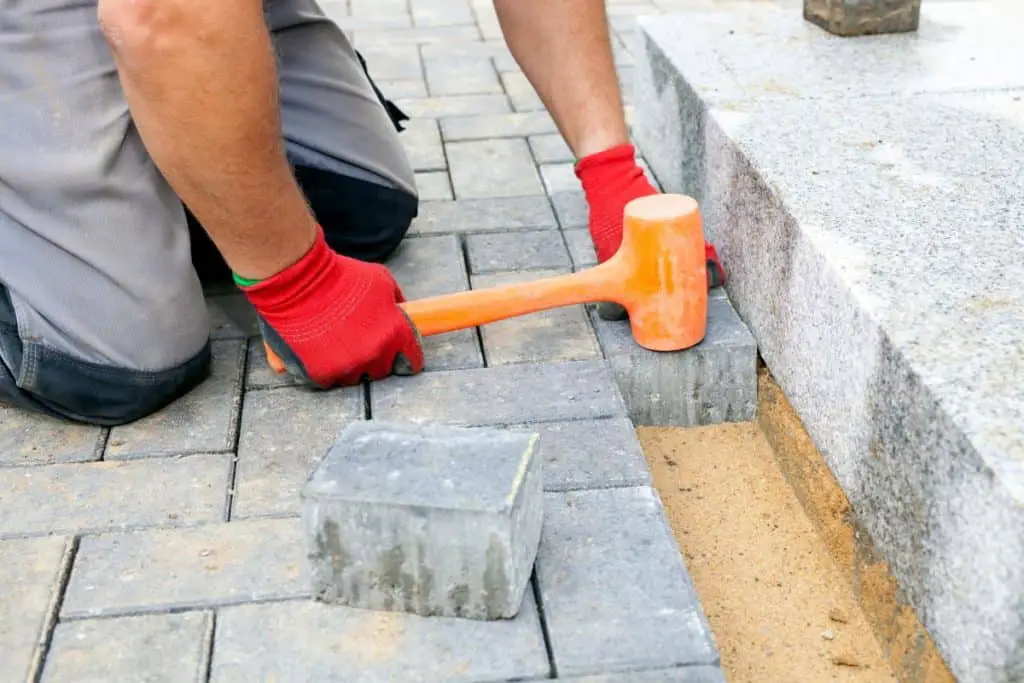
This is because darker colors absorb all the wavelengths found in light – even the wavelengths we don’t see with our eyes. Those wavelengths are then converted directly into heat that then gets trapped in the concrete.
This is why our parents always warned us about wearing black or dark clothes outside in the summer.
White, however, is a color at the opposite end of the spectrum that absorbs none of the wavelengths found in light.
White is highly reflective and can’t really convert anything into heat.
This is different than what color the concrete was painted with, which will be covered in the next section.
Concrete mixes are sold in different colors. Manufacturers add pigmentation to the mix which affects what color the concrete will be after it has set and cured.
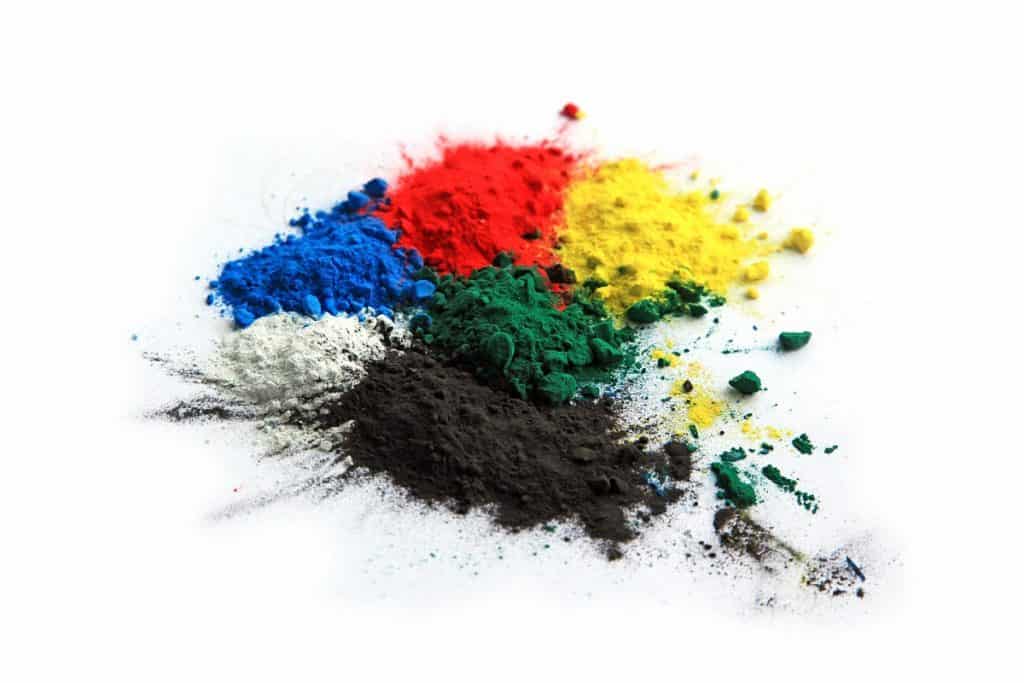
Darker color pigments will absorb more heat into its core than lighter color pigments.
Patios are exterior spaces where there will (hopefully) be a lot of foot traffic, and sometimes without protection or covering like shoes and socks. Picking a concrete mix with a lighter color pigment for this space is the smart thing to do and can protect everyone from painful burns.
Related article: Can Hot Concrete Burn Skin?
Add a Coating to Keep the Concrete Patio Cooler
As in the previous section, the color you choose to paint your concrete will determine how absorbent of heat the concrete will end up.
If you find yourself in a position where the concrete has already been poured, and it is absorbing a lot of heat, painting the concrete a light color will help reflect the sun’s rays and keep the concrete cooler.

In general, however, non-painted tends to get hotter than painted concrete. This is because a few coats of paint will prevent the concrete from getting exposed directly to the sun.
The best colors to paint the concrete floor of a patio would be white or something close to it, like off-white.
Unfortunately, paint doesn’t last forever. Eventually, it will peel or deteriorate since it will get exposed to the elements. The sun’s harsh ultraviolet rays will make quick work of the painted coats within a few years.
Concrete, in general, will require a lot of maintenance for it to last a long time (10 to 70 years). This is why most homeowners seal the concrete patio to protect their concrete.
It has been proven that consistent maintenance on concrete will keep it cooler despite the heat.
Sealer is a great product to use because it’s reflective of the sun’s rays and prevents heat from getting absorbed and trapped in the concrete.
Be sure to choose the best concrete sealers and paint that last long to lengthen the lifespan of your concrete.
Add Shade to Prevent Heat From the Sun’s Rays
For us humans, doctors recommend that the best way to prevent skin cancer is not necessarily to coat ourselves with high-SPF sunscreen. Instead, the best way to avoid sunburns and cancer is to stand in the shade.
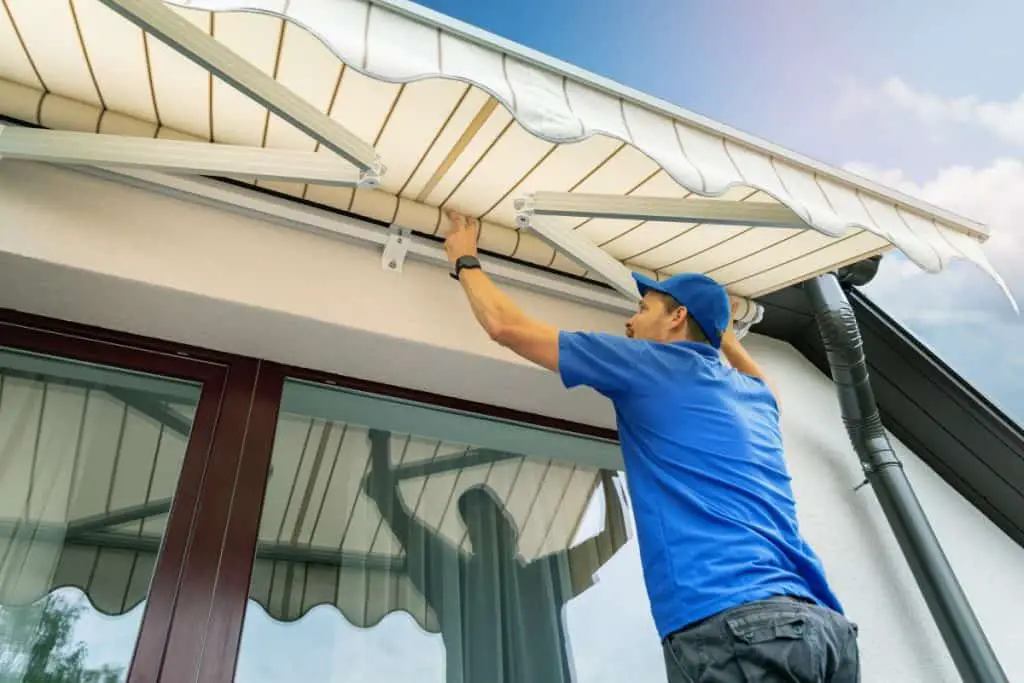
Whether it be by umbrella or parasol, the shade is the best way to block the sun’s harmful UV rays from giving us serious health issues. The same goes for concrete.
In fact, many professionals who work with concrete say that shading the concrete is the best way to keep it 20 degrees or cooler than if it was left in the sun.
This method is easy, cheap, and protects both the concrete and anyone else who happens to be using that space at the time.
There are several products on the market you can use to provide just the right amount of shade for your patio space. Below is a list of a few of them.
Which product you use will depend on what kind of space you have.
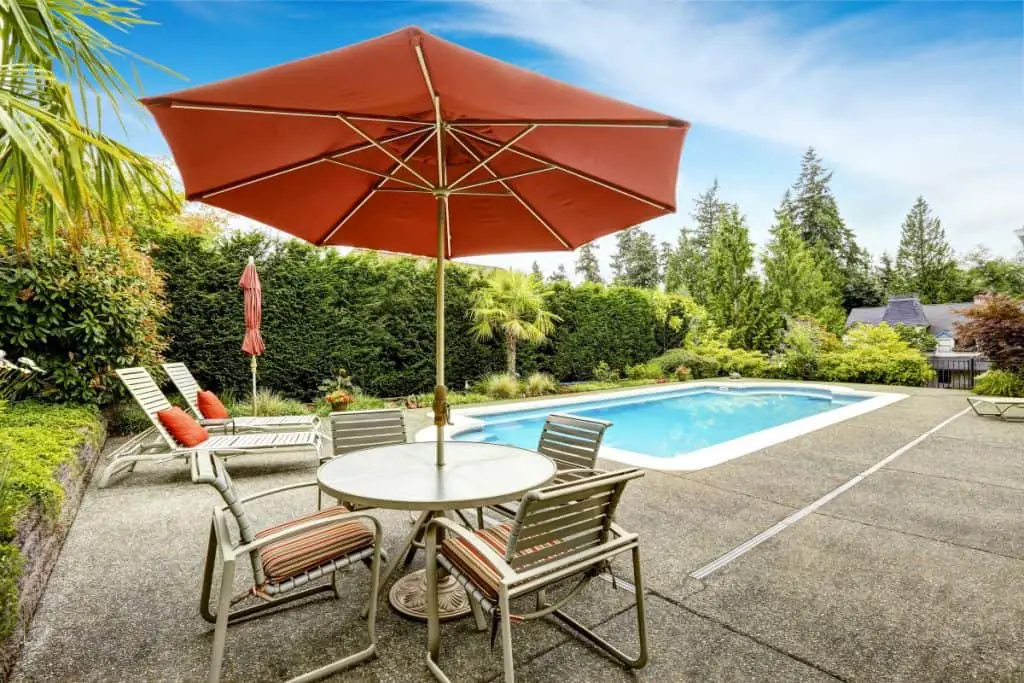
- Awnings: Also called “overhangs,” these are extensions that, once installed, can fold, or retract and extend, providing extra shade over exterior spaces typically alongside the house or building.
- Canopies: These are similar to awnings but utilize columns to hold up a roof of fabric or metal. A tent is a perfect example of a type of canopy.
- Patio Umbrellas: These come in different sizes and shapes and are also made of different materials.
- Gazebos: These structures tend to be larger and built of sturdier materials like wood or steel. They provide heavier duty protection from the sun, rain, snow, or other elements.
- Pergolas: A pergola is typically a wooden structure that is stylistically and aesthetically designed to cover an exterior space. They have columns supporting cross-beams and lattice made from wood.
- Patio Netting: Perhaps the cheapest item on this list, netting is a type of mesh fabric that can be hung up around a patio that can prevent insects and mosquitoes in addition to some sunlight.
Use A Fan Or Cooling System
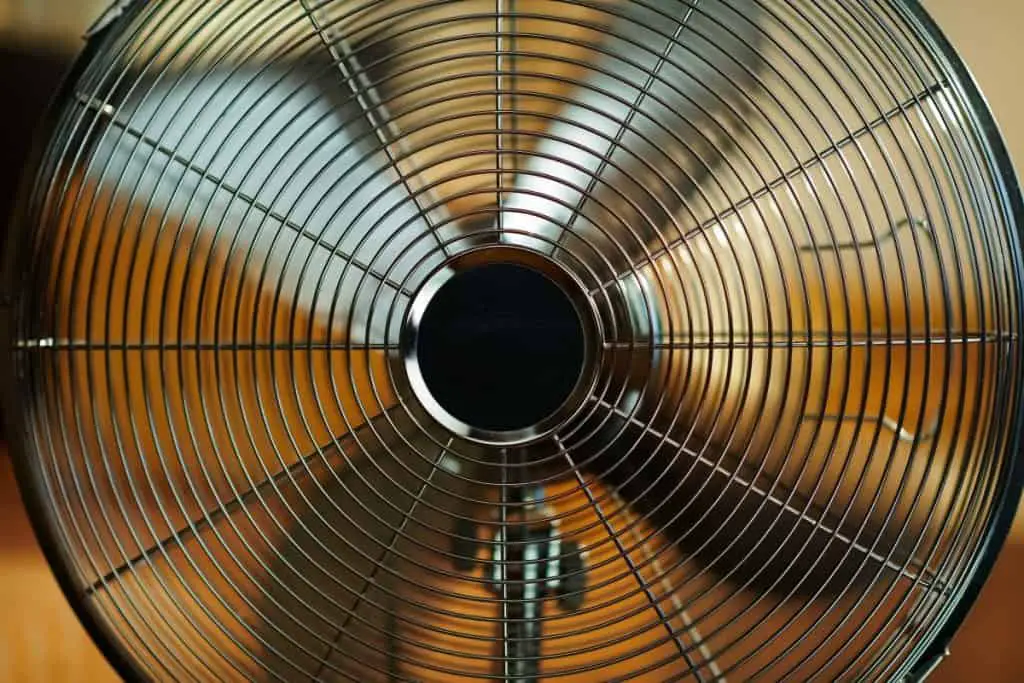
Fans can create air circulation in a patio area, which can be a welcome relief. However, circulating air doesn’t necessarily cool the air in and of itself.
Sitting in a circulation of hot air can quickly become a miserable experience. If the air is cool enough, fans can do the job nicely.
Some patios may also already have ceiling fans installed. These can keep you, visitors, as well as the concrete cool during a hot summer afternoon.
However, if a fan won’t cut it on the hottest of days, then installing a type of cooling system in your patio may be the better choice.
Misting systems will send a fine mist into the air. They require a constant water supply (upwards of 1.5 gallons of water per hour per nozzle) and a power source to work. You may have seen these used in outdoor seating areas at restaurants.

Evaporative coolers and swamp coolers are basically air conditioning systems for the outside. They suck in warm air and distribute cold air.
Fog systems, or “foggers,” use high-pressure pumps and nozzles with stainless steel tubing to create a fog-like effect that will cool down concrete.
Add a Decorative Covering to Your Concrete Surface
By covering up the concrete surface the patio can feel much cooler on hot summer days.
One easy alternative is to lay a rug over the concrete.
Don’t just lay any old rug. You’ll need to choose an all-weather rug that can survive the elements, be it snow, rain, hail, or, yes, even the sun’s UV rays.
Rugs can absolutely add a decorative covering to your concrete surface. They come in all shapes and sizes and will keep concrete much cooler in warmer weather.
Related article: Do Outdoor Rugs Damage Concrete?
Rugs can be nice to walk on and prevent bare skin from getting burned. However, you won’t need them when the temperature cools down such as during the winter, when it rains, or at night.
Leaving out a rug 24/7 for 365 days out of the year will wear it down until it becomes useless to you. Roll it up and put it away when it’s not needed.
But there are more ways to cover up a concrete patio to keep it a bit cooler.
Read our guide, ‘5 Ways To Cover Up a Concrete Patio‘, to get some ideas.
Spray the Concrete With Water
Lastly, you can’t go wrong spraying the patio concrete with water from a hose.
It’s the simplest, cheapest, and most effective way of cooling concrete down and protecting it.
Let a hose run over it, splash it with a bucket of water, or spray it from a bottle.

